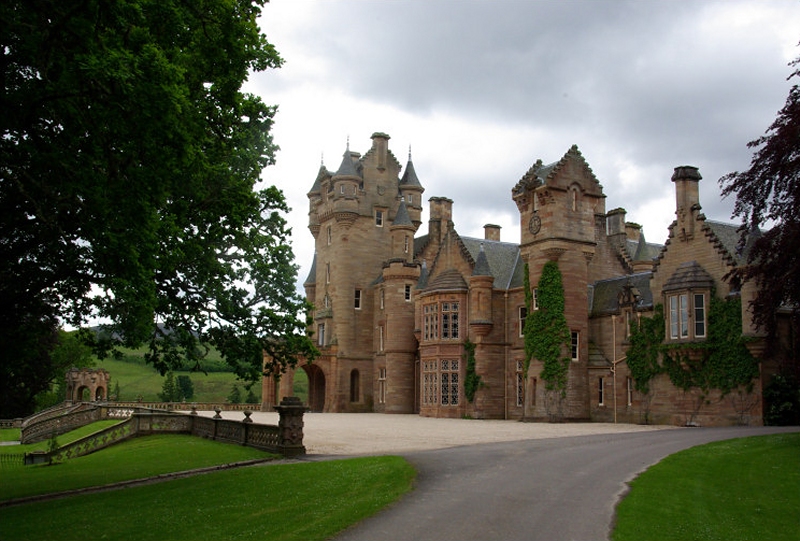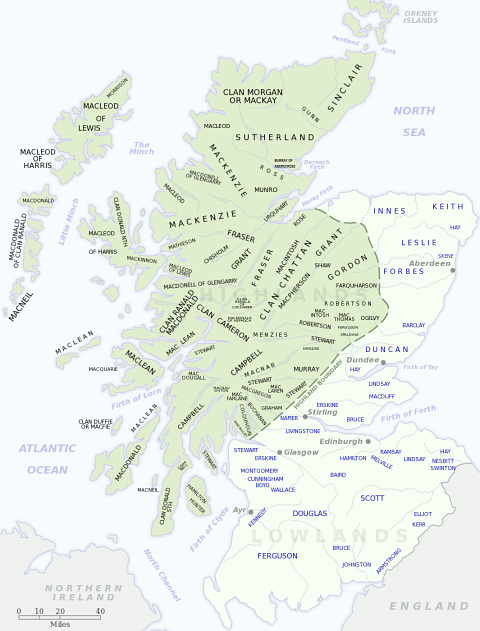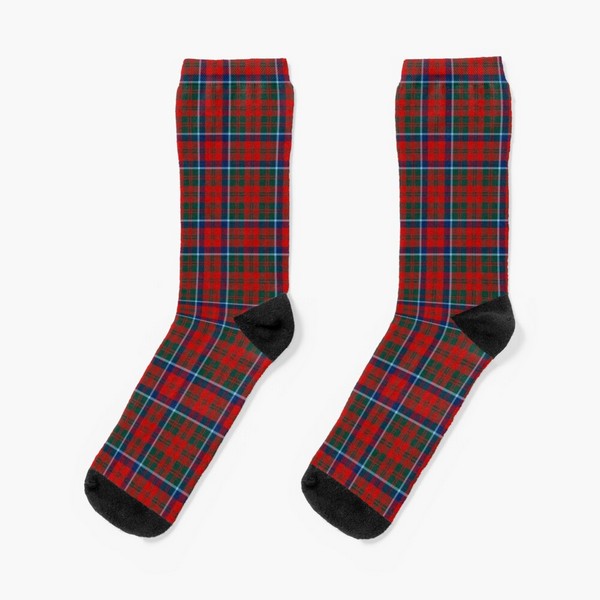
Motto: Fac et spera (Do and hope)
Historic Seat: Fort Matheson, Ardross Castle
District: Sutherland, Inverness
Associated Surnames: MacMath, MacPhun, Massey, Mathie
Associated Tartans:
Early Matheson Genealogy and History:
(Excerpt from "The Scottish Clans and Their Tartans", James Grant, 1906)
This name is probably of Norse extraction, as above one hundred so called are now in the city of Christiania.
John Matheson of Lochalsh, eldest son of Alister MacRuari, was constituted by John MacKenzie of Kintail, who fought at Flodden,1 Captain of the Castle of Ellandonan (of which MacKenzie got a charter in 1508), and in defending that fortalice against Donald Gorm MacDonald of Slate in 1537 he was killed.
By his marriage with the widow of Dugald MacKenzie, tutor of Kintail, he had a son named Dugald of Lochalsh, known as Dugald Roy, who died at Invergarry on the banks of Loch Oich, leaving a son, Murdoch Matheson of Lochalsh, who had two sons, Roderick and Dugald.
Roderick became the progenitor of the Mathesons of Burnetsfield. Dugald inherited Balmacan, and had three sons, the eldest of whom, John Oig, married a daughter of MacKenzie of Hilton; and was succeeded by his eldest son, Alexander Matheson, who married Christian, daughter of Farquhar MacRae of Inverinate.
Their son, designated as of Fernaig, married, firstly, a daughter of Murchisson of Auchetertyre, by whom he had no issue; and secondly, Mary, daughter of MacRay Arigngon, by whom he had, first, John, his heir; second, Kenneth, killed with Wolfe at the battle of Quebec; third, Alexander; fourth, Farquhar Matheson, who obtained the lands of Courthill.
The third son, Alexander, became proprietor of Attadale, and married Catherine, daughter of Matheson of Balmacan, and had issue.
In 1851 Mr. Matheson acquired by purchase his forefathers' ancient patrimony of Lochalsh, which had been forfeited in 1427 for being concerned in the outrage for which Alister MacRuari was executed at Inverness, and which Balfour records thus in his Annals: –
"1427, Januarij, this zeir, K James goes to Innernesse, to suppresse the rebellione of Ihone Campbell, John MacKarture, and Alexander Mackrorey, quho had willanously killed Ihone, Lord of the Isles. These three the King caused hange on ane tall ocke."2
In the same year another of the same name suffered in the famous conflict at Drum-na-coup,3 in Tongue. It was fought between the MacKays and the Sutherlands, and so sharply that, according to the "Conflicts of the Clans" (written in 1620), "in the end there remained few alive of either side."
The MacKays obtained a complete, though mournful, victory, for their aged chief was accidentally slain by Iomhor MacMhathan (or Matheson).
Matheson's head was struck from his shoulders and placed on a pole, planted on a knoll, called to this day Cnocan an Ceann, or the "Hillock of the Head."
(End excerpt)
Next page: Clan Maxwell
Footnotes:
1 The Battle of Flodden (1513): The Battle of Flodden Field was fought on 9 September 1513, in Northumberland England between an army of Scots under King James IV and an English army commanded by the Earl of Surrey. Read more about the Battle of Flodden at Wikipedia.
2 1427, January, this year, King James goes to Inverness, to suppress the rebellion of John Campbell, John MacCarter, and Alexander MacCrory, who had villainously killed John, Lord of the Isles. These three the King caused hang on one tall oak.
3 The Battle of Drumnacoub: A Scottish clan battle fought between different factions of Clan MacKay some time between 1427 and 1433 near the Highland village of Tongue. Other clans involved include Sutherland and Murray. Read more about the Battle of Drumnacoub at Wikipedia.

Distribution of Scottish clans and families
View larger map at Wikimedia Commons

Browse the Clan Matheson Tartan Collection with clothing, home decor, accessories, electronics cases, and more.

Clan Matheson Postcard: Digitally cleaned and enhanced vintage illustration with tartan border.